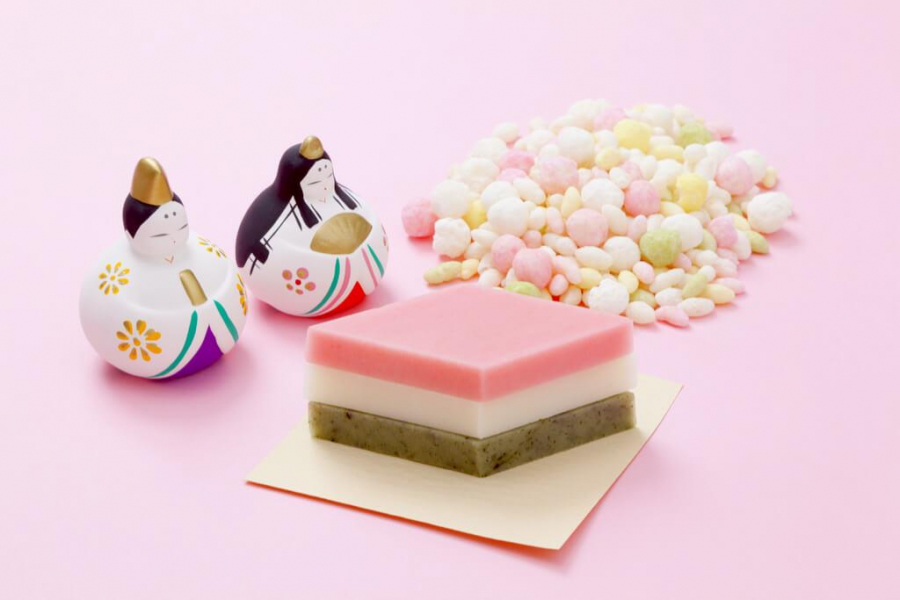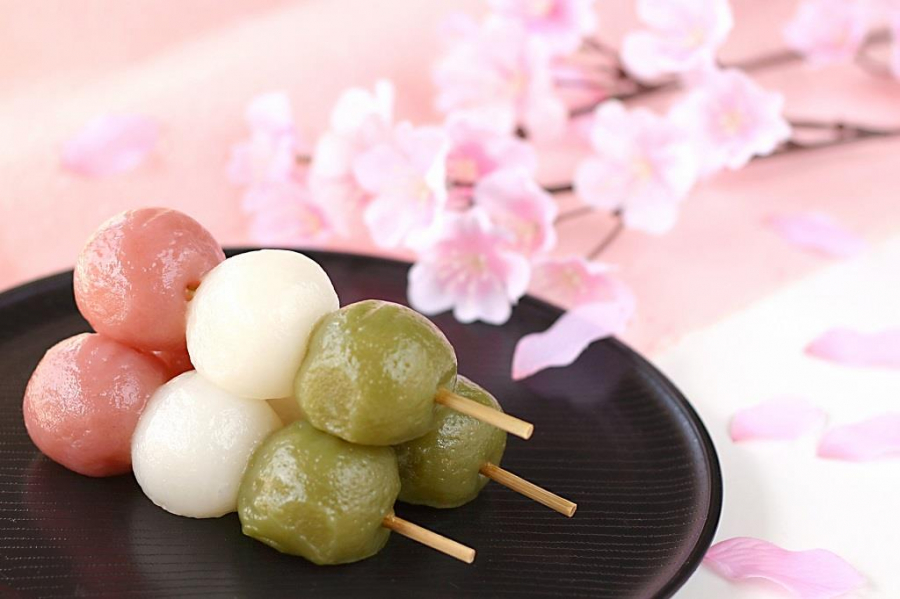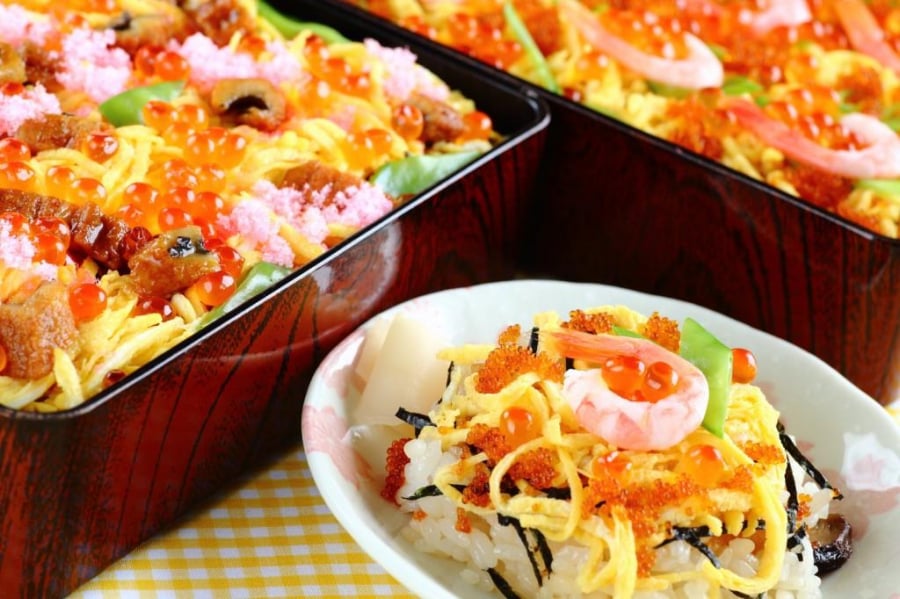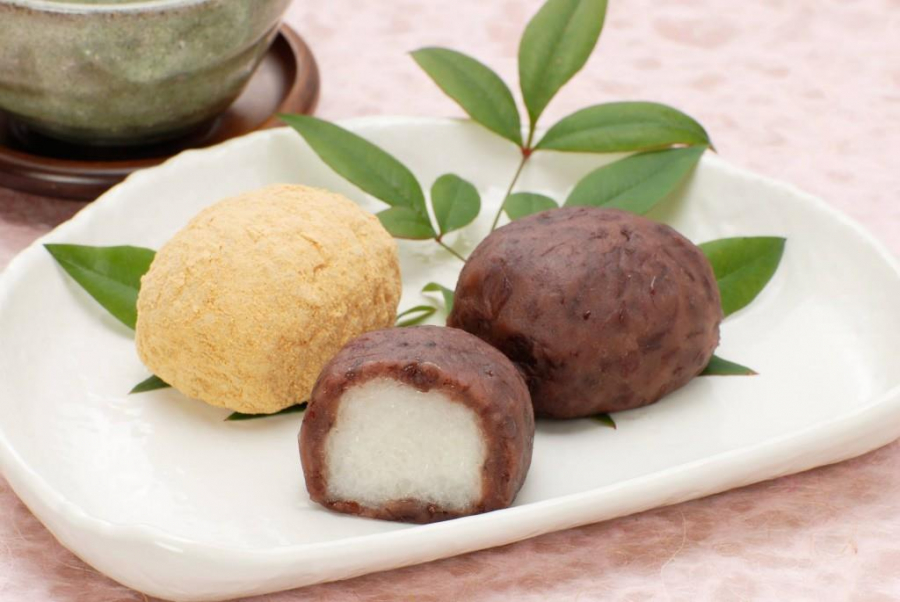Japan is a country of festivals. No matter what time of year tourists come here, they will enjoy the scene of people "celebrating" something, such as the moment of changing seasons, flower viewing, moon viewing... And along with these festivals are special Japanese dishes, reflecting the cultural beauty of this country.
Hishimochi
In early March, there is Hinamatsuri, which means doll festival or girls festival. On this day, families with young daughters will join in praying for their good luck and health, as well as a prosperous life and a happy marriage in the future.
Hishimochi is the most classic dish of the Hinamatsuri festival. It is a diamond-shaped rice cake with three layers of three different colors: white, green, and pink. The white color symbolizes the melting winter snow, the green color symbolizes the new growth, and the pink color represents the cherry blossoms that bloom early in spring.

Sanshoku Dango
“Sanshoku” means “three colors”, and these dango, as the name suggests, come in three colors: white, blue, and pink, similar to hishimochi. The difference is that they are usually skewered, but the colors still have the same meaning as hishimochi. These three colors are also the main colors for Hinamatsuri.

Chirashizushi
Chirashizushi, which literally means “messy sushi,” is a dish of vinegared rice with various ingredients that look as if they were spread haphazardly, but it actually has its own decorative meaning. Since certain types of fish are considered lucky symbols in Japan, sashimi is often used as a garnish for chirashizushi.
At first glance, it seems like the Japanese just “waved” it around to create this dish. But the colors of Chirashizushi are always calculated to be harmonious. This is also a popular dish in Hinamatsuri and spring festivals in general.

Sakura mochi
Cherry blossoms are the national flower of Japan, so sakura mochi also has a very special meaning for the people here. This dish is often eaten in early spring, specifically during the flower viewing festivals that take place throughout this time. Sakura mochi has a bright pink color like cherry blossoms, with sweet red bean paste inside and a layer of salted cherry blossom leaves on the outside.

Hanami bento
"Hana" means flower and "mi" means to see. Hanami bento are lunch boxes prepared for flower viewing trips or spring trips at the beginning of the year. A hanami bento box includes many things depending on people's preferences, but they are all beautifully decorated.
Sometimes decorated with pink desserts, sometimes with flower petals, sometimes with a peach blossom branch. Hanami bento boxes always bring the fresh breath of spring.

Botamochi
In Japan, there is also a festival called Ching Ming. On this day, people visit their ancestors' graves and clean them, then gather together and eat botamochi. "Bota" means peony, which is a flower that also blooms in spring. Botamochi is a rice ball wrapped in azuki red beans, then coated with kinako soybean powder or crushed sesame seeds.


































